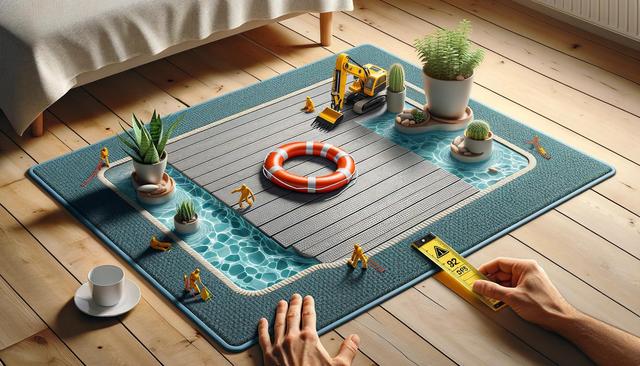Understanding the Role of Slip Resistance Mats
Slip resistance mats play an important role in enhancing safety in spaces where moisture, spills, or smooth surfaces increase the likelihood of accidents. These mats are specifically engineered to offer additional traction, reducing the risk of slips and falls. Whether used in commercial kitchens, bathrooms, entryways, or industrial work zones, they provide a reliable surface that helps prevent injuries. Their textured surfaces are often designed with grooves, raised patterns, or rubberized materials that grip the base floor and provide friction underfoot.
For environments with high foot traffic, the need for added safety is even more pressing. A well-placed mat can significantly lower the chances of accidents, contributing to a safer and more compliant workspace. Beyond the obvious benefit of reducing injury risk, these mats also help maintain cleanliness by trapping dirt and moisture at entry points, preventing it from spreading across the floor.
Key Features That Make a Difference
Slip resistance mats come in a variety of materials and designs, each suited for different types of environments. Some of the most commonly used materials include rubber, vinyl, and polypropylene. Each offers a unique balance of durability, grip, and ease of maintenance. When selecting a mat for your space, consider the following features:
- Surface Texture: Raised ridges or patterned textures enhance grip and reduce slippage.
- Drainage Holes: Ideal for wet areas, these allow water to flow through instead of collecting on the surface.
- Beveled Edges: Help reduce tripping hazards and facilitate easier movement of carts or wheelchairs.
- Anti-Fatigue Properties: Some mats are designed to reduce strain on the legs and back for those standing long hours.
Choosing the right mat means evaluating not just the surface material but also how the mat interacts with the environment and user behavior. A mat that’s ideal for a food preparation area may not be the right fit for an office lobby, so understanding the context of use is essential.
Installation and Maintenance Considerations
One of the advantages of slip resistance mats is their ease of installation. Most mats are designed to be placed directly onto the floor without the need for adhesives or complex tools. This makes them a flexible solution for both temporary and permanent use. In high-traffic areas, mats can be repositioned or replaced as needed, allowing for quick responses to changing safety needs.
Maintenance is straightforward as well. Many mats can be cleaned using standard methods such as vacuuming, mopping, or hosing down. Some are even machine-washable, depending on the material. Regular inspection is recommended to check for signs of wear, curling edges, or reduced grip, which could compromise their effectiveness. Keeping mats clean not only extends their lifespan but also ensures that they continue to provide the intended level of safety.
Applications Across Multiple Environments
Slip resistance mats are versatile tools that can be used across a wide range of settings. Their adaptability makes them suitable for both residential and commercial spaces. In homes, they are commonly used in bathrooms, kitchens, and entryways. In commercial and industrial settings, they are found in locations such as:
- Restaurant kitchens and dishwashing stations
- Hospital corridors and patient care areas
- Retail store entrances and checkout areas
- Warehouses and manufacturing floors
In these varied environments, the mats serve not just as a safety measure but also as a functional part of the workflow. For example, in a kitchen, a mat with anti-fatigue properties can help staff stay comfortable while also preventing slips. In a healthcare setting, mats with antimicrobial properties can contribute to hygiene alongside safety.
How Slip Resistance Mats Support Safety Compliance
Many businesses are required to meet specific occupational health and safety standards, and slip resistance mats can play a role in achieving compliance. Workplace safety regulations often mandate measures that prevent slips and falls, especially in areas prone to moisture or spills. Installing mats in these zones can be a proactive way to meet such guidelines and avoid penalties or liability in the event of an accident.
Additionally, insurance providers may look favorably on organizations that take preventive steps to reduce hazards. By using slip resistance mats, businesses demonstrate a commitment to employee and customer safety. This not only helps in creating a safer environment but can also support operational continuity by minimizing the number of workplace incidents and associated downtime.
Conclusion: A Practical Investment in Safety
Slip resistance mats offer a straightforward yet effective way to enhance safety in a variety of settings. Their ability to reduce the risk of falls, accommodate different environments, and support compliance with safety standards makes them a valuable addition to homes and workplaces alike. For facility managers, homeowners, or business owners looking to improve safety without major renovations, these mats present a practical, low-maintenance solution. By investing in the right type of matting, one can create a more secure and comfortable space for everyone who walks through it.


